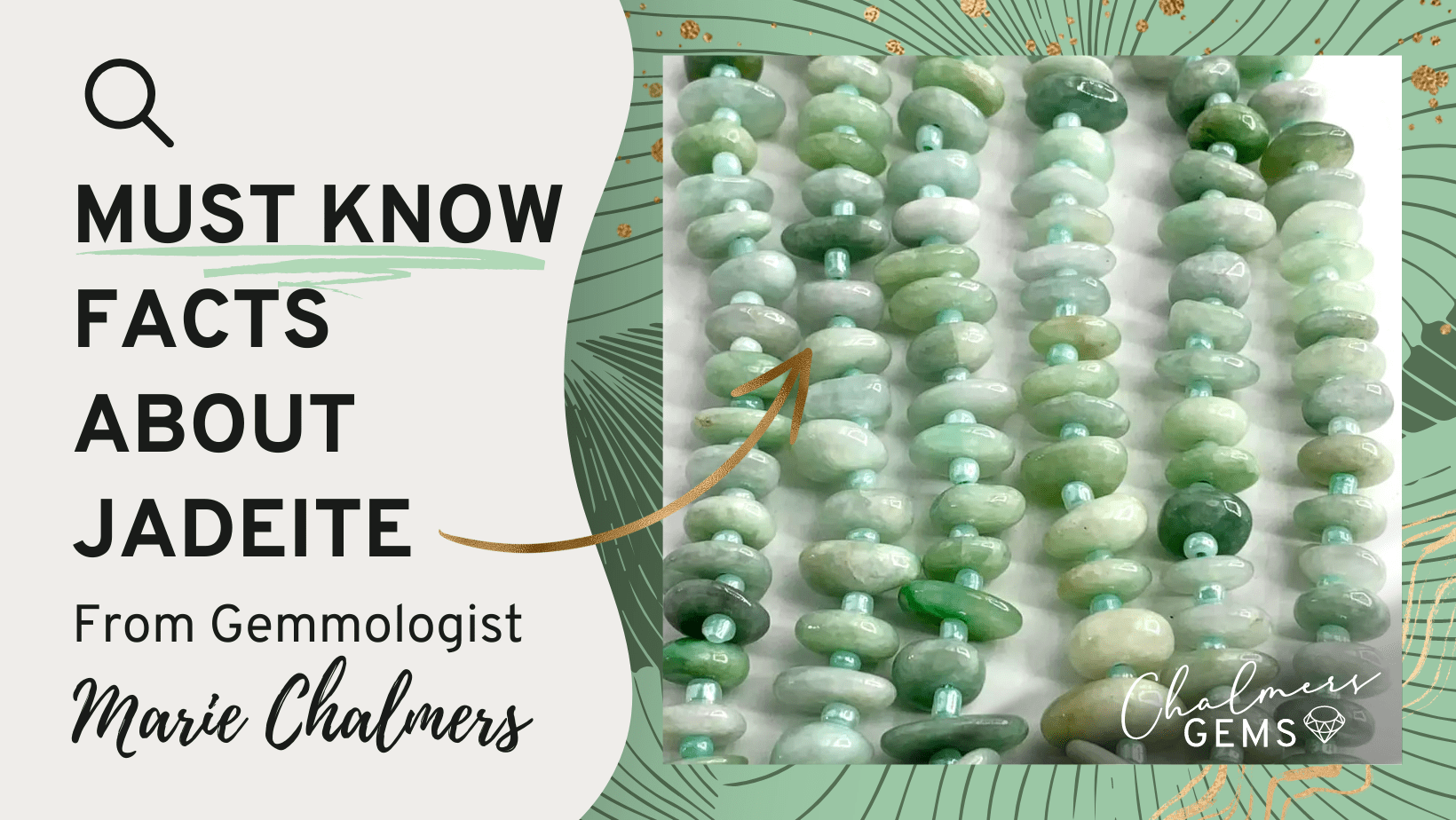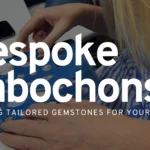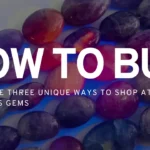Your basket is currently empty!
Must-Know Facts About Jadeite From Gemmologist Marie Chalmers

When it comes to Genuine Jade, there are two types of Minerals: Jadeite and Nephrite. These are alike in appearance but have different optical properties, chemical makeup, and structures. However, Jadeite is the rarer form, therefore more expensive of the two. For a very long time, no one knew that there were two varieties of Jade. It wasn’t until the 1860s, when science and Gemmology had significantly progressed, that the different chemical make-up and structure was unearthed.
Most people will be familiar with Jade and it links to China. Jade has been prized in China for its magical properties and beauty since ancient times. You may have seen countless examples, of beautifully and intricately carved Jade from just about every era and dynasty of China’s history. There are very few other Gemstones that have the same cultural and historical link with a country as Jade and China do. In western societies, we place similar religious, cultural and monetary values on gold. Jade’s strong association with Chinese culture keeps the value of Jade high. There’s even a Chinese saying that “Gold has value, but Jade is invaluable”.
Bonus Fact: The medals at the 2008 Beijing Olympics were set in White Jade from the Kunlun Mountains of the Qinghai province.
Jadeite has a grading system – type A, B and C. Heat treatment or colour enhancement is becoming a more common practice within the world of Jewellery. However, this is not the case with Jade. It takes a very skilled professional to spot the difference between natural and treated Jadeite.
- Type A – Natural form and has undergone no treatment
- Type B – Chemically treated (usually stabilised at source)
- Type C – Dyed colour
Type A Jade is extremely unusual and valuable and most of the Jadeite in the market is Type B, the rough material is generally stabilised at the source.
To be able to categorise Jadeite, you’ll require very expensive and hard to get hold of Gemmology equipment that can only be found in a TRUSTED Gemmological Laboratory like GIA. There are two methods to test Jade:
- Destructive
- Non-Destructive
The first method, destructive, sounds painful and we wouldn’t want our beautiful carved Jadeite to be destroyed. Therefore, this method is reserved for academic research only as it involves heating the Gems to up to 1,000oC! We definitely prefer the sound of Non-destructive testing – to be able to carry out the testing you would need specialist equipment and expertise. I wouldn’t talk about the testing.
The Jade market can be extremely confusing as it is a speciality to work with Jadeite – Marie knows of a few specialists who now live in the UK but have lived in China. It is such a skill to understand and operate within the Jadeite market.
We all know Jadeite as a green Gemstone, but did you know it actually comes in a range of colours? Jadeite can come in all kinds of colouring from white to black but is mainly found as pale green with a tint of lilac. Our Jadeite Buddha Beads exhibit this green to purple shading perfect. You can now purchase Lavender Jade which is Jadeite when it is a natural purple colour.
Normally all Jadeite is opaque, translucent Jade is much rarer and therefore has a very high value.
There are many famous or notable pieces of Jade. Most being carvings outdating our great great great great Grandparents! At the British Museum in London, they exhibit many pieces of Chinese Jade dating back to approximately 5000 BC up until the modern-day! These pieces are stunning and well worth a visit if you are a Gem Geek like all of us at Chalmers Gems.
Unfortunately, because of its high price point, lots of traders call other Gemstones Jade due to a similarity in appearance. Jadeite is one of the most misdescribed, misunderstood and mis-sold Gemstones in the market. You must only buy from a trusted reputable source. You will often find Green Aventurine or Bowenite being sold as Jadeite.
Marie’s Top Tip:
If you are considering investing in Jadeite (it can be tricky), you should ask the seller to provide you with a certificate from a trusted Gemmological Laboratory proving it is authentic Jade such as GIA.
One response to “Must-Know Facts About Jadeite From Gemmologist Marie Chalmers”
-
I really appreciate your expertise in gemstones and really enjoyed reading all about them . I have been led to believe that most of the jadeite comes from Burma is this true because I have bought a lot of Grade a Burmese jadeite it’s the green type some light and dark green . Thanks





Leave a Reply